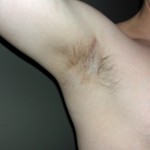Enlargement of the male chest is most commonly done through exercise and subsequent muscle hypertrophy. Strenuous physical exertion and protein supplements can build muscle, often times very impressively. Under ordinary circumstances, most people can create mild to moderate pectoral enlargement that they will find satisfactory. For those seeking substantial chest definition, chest enlargement in the shortest period of time, or if one suffers from developmental pectoral or sternal deformities, exercise alone will not produce a desired result.


A pectoral implant is inserted under the pectoralis major muscle but above the smaller pectoralis minor muscle. This is a natural plane that is easily developed. The dissection should not be lower than the bottom edge of the muscle unlike the pocket that is developed for female breast implants. The goal is to increase the projection and definition of the existing pectoral muscle, not create a new outline or position for it. (in some developmental chest wall deformities this may be needed)
The pectoral implant itself is a solid silicone elastomer that is soft and flexible. Its flexibility is demonstrated but it being able to be folded unto itself to be inserted through the armpit incision. Its feels very much like a ‘gummy bear’ candy. Pectoral implants comes in several different styles (and different sizes within each style), an oval and a more rectangular shape. Which one is best can be determined by taking measurements of one’s pectoral muscle and an artistic sense of the patient’s final goal. As a general rule, rectangular implant is going to give more bulk and definition as there is more implant volume per size. But, like breast implants, the exiting size and shape of one’s chest has a major impact on how any style or size will look.
Because it is muscular manipulation, pectoral implant surgery will be sore after and it takes time to feel comfortable again. I do not use drains after surgery but some plastic surgeons do as this is perfectly fine. Fluid collections or seromas after surgery are not only possible but do occur. So limiting strenuous activity for 3 weeks after surgery is important. But I do want patients to be doing arm range of motion exercises within days after surgery, but just no weights.
Pectoral implants offer a rapid and reliable method for enhancing the male chest. Good results come from a limited intraoperative pocket dissection, good implant style and size selection, and refraining from strenuous physical activity for several weeks after surgery.
Dr. Barry Eppley
Indianapolis, Indiana


